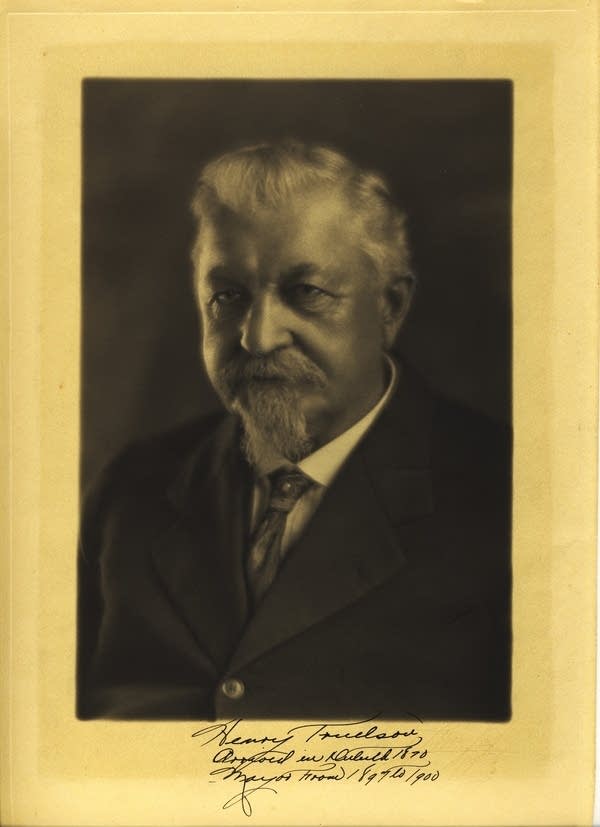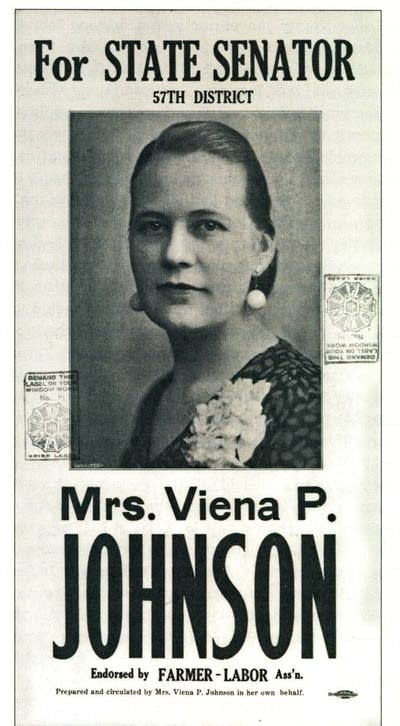How Duluth became a union town
Go Deeper.
Create an account or log in to save stories.
Like this?
Thanks for liking this story! We have added it to a list of your favorite stories.

A party at the Duluth Labor Temple featured an old-fashioned Finnish brass band, the Sampo Band. The party was in honor of a new book about the history of the labor movement in Duluth. It was written by Richard Hudelson and Carl Ross. (Ross recently died.)
The book describes the ups and downs of labor history in Duluth -- starting in the 1900s, when waves of immigration made the city more of a layer cake than a melting pot.
Hudelson says ethnic backgrounds, religious differences, and even attitudes about liquor affected union organizing.
"The Swedes and the Norwegians tended to be temperance minded," he says. "But the Germans of course love their beer, and a lot of Poles and other groups did too. So you get the temperance thing, and that tends to line up with with a Protestant-Catholic divide."
Turn Up Your Support
MPR News helps you turn down the noise and build shared understanding. Turn up your support for this public resource and keep trusted journalism accessible to all.
Skilled workers like plumbers and plasterers, formed craft unions. But the first group to welcome less skilled workers was the Knights of Labor. It was open to everyone.
"I think the only exclusions were for lawyers and bankers," Hudelson says.

Immigrants joined the Knights of Labor in droves. In 1889, laborers building Duluth's streets tried to get a raise, from $1.50 to $1.75 a day.
"And there was a huge confrontation between striking workers and the police, that led to this shoot-out, with people killed," he says. "And that led then to organizing the immigrants to City Hall, which they did. And for most of the 1890s, elected officials were pro-labor or were put into office by the labor movement."
Then U.S. Steel came to town and, by 1907, destroyed the unions that tried to represent its workers.
Smaller companies copied that hard line against labor organizing.
The Knights of Labor went out of business.
In its place another group started organizing. It was the Industrial Workers of the World --the IWW -- also known as the Wobblies.
"And that was huge in Duluth," Hudelson says. "I'd heard rumors about that, but I had no idea what strong Wobbly territory this was."
But the IWW faltered under a wave of anti-unionism during World War I. Most states formed a Commission for Public Safety -- almost a parallel government, run by staunchly anti-union business leaders.
"In Duluth, IWW headquarters were ransacked. Police stood by and watched," Hudelson says. "Arrests were made, many of the prominent IWW leaders in the region were arrested and put on trial, some of them sentenced to long sentences."
Many IWW activists turned to the Communist Party. The Communists were well-organized, and many of them were hard-working idealists, committed to improving the lives of workers around the world.

Hudelson says for 30 years, pro-business attitudes made it next to impossible to organize workers anywhere in America.
"Well, it was legal to organize a union, but the courts would routinely give injunctions to prevent picketing," he says. "Companies would routinely hire scab crews, and companies would hire gunmen to protect the scab crews."
Finally, in the depths of the Depression, the Roosevelt New Deal legitimized unions.
"People just came out of the woodwork, trying to organize unions in West Duluth, the whole western half of the city," Hudelson says.
Some of the most effective union leaders were secret Communists. Some Communists also were active in the Farmer-Labor Party -- this was before it merged with the Democrats.
"A number of these Communists had been active for many years, sort of beneath the radar screen," he says. "So they were known, and a lot of them were highly respected. And for a very brief period that group was a significant force in local politics."
The Farmer-Laborites elected Floyd B. Olson as governor, and suddenly labor had a friend in power. The state established a minimum wage, social security, and the right to bargain collectively.
Soon after, Farmer-Labor Governor Elmer Benson sided with lumberjacks who were trying to get better working conditions.
"The camps were terrible," Hudelson says. "They were lice-infested, they were cramped, they smelled bad, there was no ventilation. They were just not nice places. In January of 1937, a Communist-led timber workers union went on strike. The employers resisted. Governor Benson, instead of sending in Home Guard to break the strike, sent a truckload of grapefruit to striking timber workers." But in 1938 Minnesotans elected Republican Harold Stassen, and for sixteen years Republicans occupied the governor's mansion.
The Farmer-Labor Party and the Democratic Party merged in 1944, forming the DFL.

The Cold War was heating up. In 1948 Hubert Humphrey ran for U.S. Senate. But Hudelson says the leftists in the newly merged DFL party, including Communists, didn't want Truman for president and didn't want Humphrey for Senate.
"Here are the Communists breaking with the official Democratic Party, and pushing the Progressive Party candidacy of Henry Wallace," he says. "The national Democrats didn't like that, understandably. The CIO was being red-baited, so they were sensitive to the Communists within the CIO, and they wanted to get them out. The Steelworkers were determined to get the Communists out, because they were vulnerable to red-baiting."
So the conservative Democrats out-organized the radicals. Humphrey took the national spotlight and never let it go.
During the McCarthy years, Communists were blacklisted and a lot of them had a tough time making a living.
"Elmer Koivunen of the timber workers opened an auto dealership somewhere up on the Iron Range. And the FBI comes around and starts interviewing his customers, suggesting maybe they shouldn't deal with him. So he eventually had to sell out, and as a relatively old man went to work on the docks on West Coast," Hudelson says. "But there's some kind of sad stories there: of people that had contributed a lot, but through their own pig-headedness and their own ideological commitment to the Communist cause, had fallen by wayside."
Workers in Duluth are still more likely to be union members than in most other parts of the country. Hudelson says it's because of the hard work and sacrifice of their parents and grandparents.




